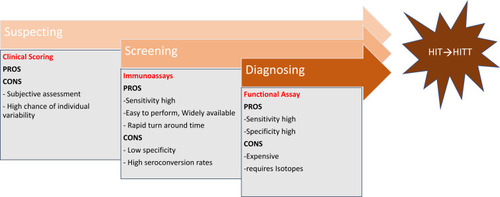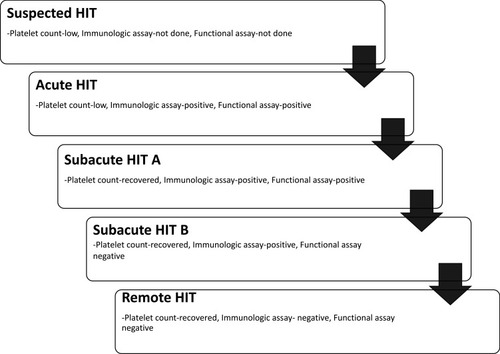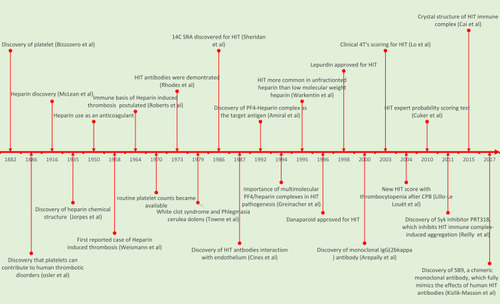Figures & data
Figure 1 Guide to decision-making for HIT from suspicion to diagnosis, with advantages and disadvantages of the assays.

Table 1 Clinical scoring systems and variables used, with advantages and disadvantages
Figure 2 The five phases of HIT, ranging from cases of suspected HIT without confirmatory laboratory tests; acute HIT, a highly prothrombotic phase that persists until platelet-count recovery through subacute and remote HIT, where functional and immunologic assays return to negative.

Table 2 Variables posing challenges while conducting functional assays and interpreting results
Table 3 Functional and immunologic assays: end points and methodological principles

